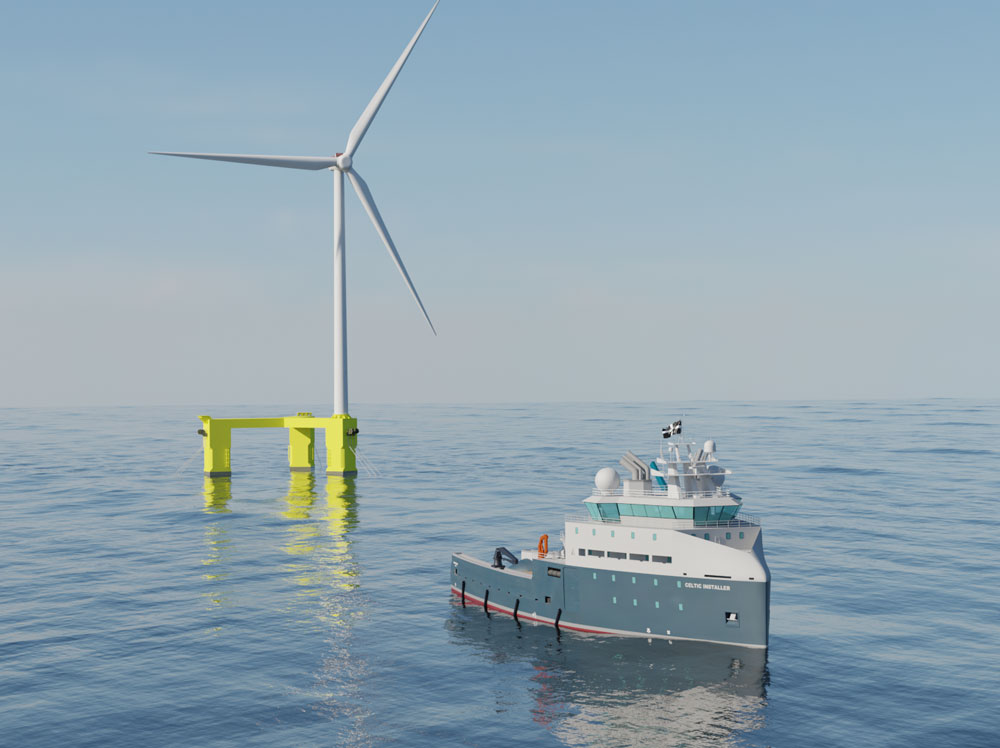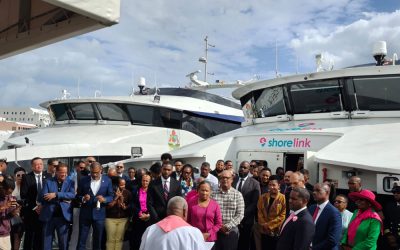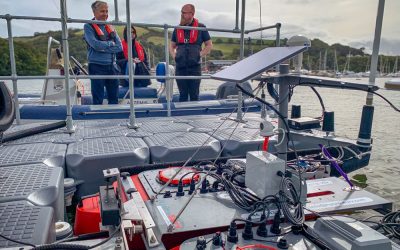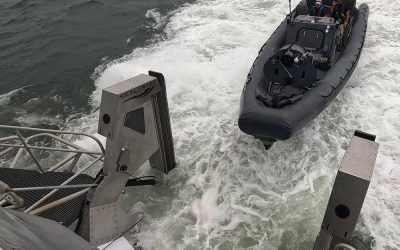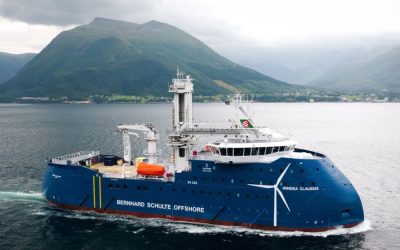A UK consortium comprising Morek Engineering, Solis Marine Engineering, Tope Ocean, First Marine Solutions and Celtic Sea Power has devised a new class of floating wind installation vessel, primed for energy efficiency and sustainable operations. Having formally unveiled the concept at a Society of Maritime Industries event in London in May, the partners say they are now “advancing toward the next design stage” in the hope of attaining approval in principle (AiP) for the concept from a major class society by December.
Dubbed the Future FLOW Installation Vessel (FFIV) (the ‘FLOW’ standing for ‘floating offshore wind’), the ship would run on methanol and would feature a hydrodynamically optimised hull, azimuth thrusters and a DP2-rated dynamic positioning system. The vessel would also feature expanded mooring line capacity, care of a sizeable below-deck cable tank for synthetic mooring ropes, and lockers capable of holding “kilometres of chain”, the consortium states.
The partners envisage a length of 95m overall (or 88m between perpendiculars), a moulded breadth of 25m and a draught of 8.5m, with onboard accommodation provided for 42 personnel. The FFIV will also feature a tow winch and anchor-handling winch, a work-class ROV and a bollard pull capacity of 104te.
The consortium adds: “[The vessel] will work with any of the three main anchor types for floating wind turbines being considered by the industry: drag embedment anchors, which require installation by high-bollard pull anchor-handling vessels; suction piles; and driven piles, which require large subsea cranes to install them into the seabed. In each case, the FFIV meets the requirements of the next phase by installing the mooring lines onto the installed anchors, enabling quick connection to floating foundations towed to the offshore site.”
The project was conducted as part of the Clean Maritime Demonstration Competition Round 4 (CMDC4), a £206 million initiative to decarbonise the UK domestic shipping sector, funded by the UK Department for Transport and delivered by Innovate UK. Catch the July 2025 issue of The Naval Architect for more on this vessel, including an interview with Bob Colclough, naval architect, MD and founder of project lead Morek Engineering.
